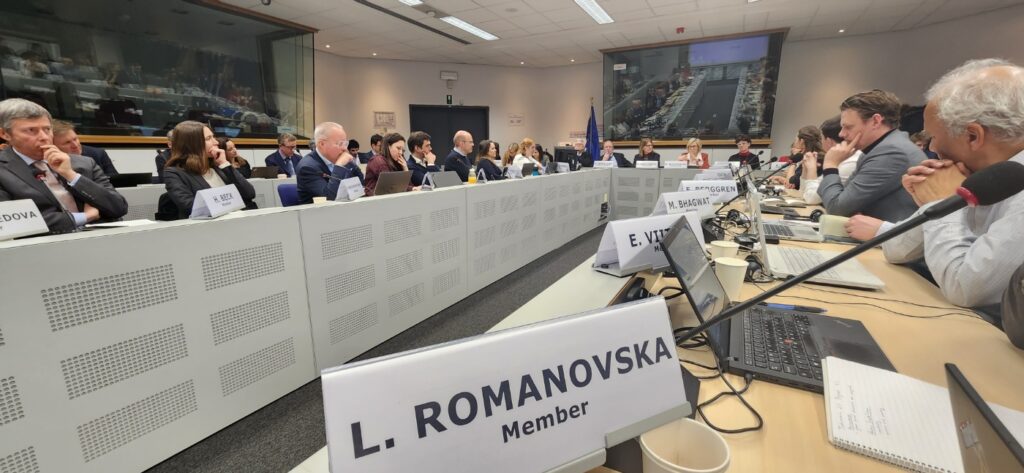How EU Taxonomy supports investments in Nature
April 13, 2023 | Blogs
Invest4Nature Expert Linda Romanovska (Melomys Advisory), is an appointed member of the EU Platform on Sustainable Finance (“The Platform”) – the technical high-level advisory body to the European Commission tasked with the development of EU Taxonomy of sustainable economic activities. Last month the Platform started work on the second 2-year mandate. In this article Linda explains how the Taxonomy incentivises private sector action and investments in Nature, Natural Capital and Nature-Based Solutions.
What is EU Taxonomy?
The EU Taxonomy aims to provide a standardized system for defining and classifying sustainable economic activities, with the ultimate goal of promoting environmentally sustainable investments across the EU in support of the achievement of a range of sustainability objectives set out in EU policies. Nature protection, biodiversity and nature-based solutions (NBS) are crucial components of this framework.
Key characteristics of the EU Taxonomy
Economic activities included in the Taxonomy must contribute to one or more of the defined sustainability objectives in a substantial way. One of these six objectives is “Protection and restoration of biodiversity and ecosystems”. Other closely related objectives, which also support the sustainability of natural capital, are “sustainable use and protection of water and marine resources”, as well as “pollution prevention and control”, among others.
In addition, all activities included in the Taxonomy must not significantly harm (DNSH) any of the other six environmental objectives, which means that activities primarily contributing to other sustainability objectives (such as climate change, for example), are also obliged to not cause significant harm to nature. The activities also need to meet minimum social safeguards.
The level of ambition for each of the environmental objectives in the EU Taxonomy is set out in so called ”headline ambition level statements” and Taxonomy criteria are designed to align with the defined ambition level. The headline ambition statement of the EU Taxonomy for the biodiversity objective is:
To ensure that by 2050 all of the world’s ecosystems and their services are restored to a good ecological condition, resilient, and adequately protected. The objectives of the EU Biodiversity Strategy will be achieved at latest by 2030. From today the world’s biodiversity needs to be put on the path to recovery and no deterioration in conservation trends and status of all protected habitats and species by 2030 will be ensured.
“Substantial Contribution” to nature in EU Taxonomy
The way EU Taxonomy determines whether an activity is making substantial contribution, is by defining Substantial Contribution Technical Screening Criteria, fulfilment of which deems an activity to be making significant positive impact.
While the first adopted sets of criteria addressed substantial contribution to the objectives of climate change mitigation and adaptation, the development of nature and diversity related criteria started soon after. Last year the EU Platform on Sustainable Finance submitted to European Commission their draft recommended criteria for a number of activities defined as making substantial contribution to this objective. Last week, the European Commission released a draft legal text version of these criteria, which, after a final consultation, will be adopted into law this year.
Out of 48 newly proposed activities and criteria sets, 2 directly target Biodiversity objective, 6 – Water, 6 – Pollution, and the majority of the rest (21 activities) target the Circular Economy objective.
The activities with newly proposed Substantial Contribution criteria for the Biodiversity objective are:
- Conservation, including restoration, of habitats, ecosystems and species
- Hotels, holiday, camping grounds and similar accommodation
In both cases the criteria require a proven improvement of biodiversity state against a documented baseline, regular monitoring of achieved outcomes, guarantee of permanence and independent third-party certification of the documentation.
In the previous mandate, the Platform had progressed work on biodiversity criteria for a number of further activities, such as agriculture, fishing, food production and others, which will likewise be continued in the coming years.
“Doing no harm” to nature in EU Taxonomy
All other activities included in the EU Taxonomy, which primarily contribute to the other sustainability objectives, also need to do no significant harm to biodiversity and ecosystems. In this regard, most current and planned activities in the EU Taxonomy refer to a general set of Biodiversity DNSH criteria, which call for Environmental Impact Assessments (EIA) in alignment with the EU regulations and risk assessments for those activities which are carried out in or near biodiversity sensitive areas. All measures identified in these assessments need to be implemented for the activity to be compliant.
Integration of NBS in EU Taxonomy
Nature-based solutions play an additional role in EU taxonomy. The newly released drafts include activities, which in and of themselves are nature-based solutions. See, for example “Nature-based solutions for flood and drought risk prevention and protection” and “Sustainable urban drainage systems” which explicitly includes NBS that support sustainable urban drainage such as sustainable swales, wetlands, ponds, green roofs, bioretention areas etc (both activities target Water objective).
Besides, the Substantial Contribution criteria for all new Adaptation activities require that they “favour nature-based solutions or rely on blue or green infrastructure to the extent possible”. The required preference of NBS is likewise emphasised in the Do No Significant Harm criteria for the Adaptation, and are therefore mandatory for most activities in the Taxonomy.
Use of EU Taxonomy for defining nature related investments / investment products
The EU Taxonomy is closely interlinked with other regulations of the EU Sustainable Finance Framework, in investment context especially importantly – with the Sustainable Finance Disclosure Regulation (SFDR). SFDR requires all investment funds, which promote sustainability characteristics or have sustainability as their goal, to disclose their targeted and actual alignment with EU taxonomy, including in regard to nature related objectives. Therefore, the EU Taxonomy has become a core consideration in the design of sustainable investment products marketed to institutional and retail investors in the EU.
Within SFDR, nature related considerations are further stressed in the definition of Principal Adverse Impact (PAI) indicator lists, which include indicators on negative impacts on biodiversity-sensitive areas, threatened species, unsustainable land practices, land artificialisation, deforestation, etc. These PAIs need to be considered (some are mandatory, others optional) in investment decisions for all sustainable investments, also those, which are not explicitly EU Taxonomy aligned.
In the future, the annual reporting by investment funds required by SFDR will provide a detailed insight into the extent to which fund and asset managers are willing to invest in nature-positive activities, businesses and projects, in response to investor preferences and demand. While the taxonomy alignment reporting by companies required (or voluntarily reported) by EU Taxonomy Regulation itself, will provide a transparent and comparable indication of which undertakings are making a substantial positive contribution to nature.
Conclusion
EU Taxonomy is a key legislative enabler for channelling sustainable investments in nature, natural capital and nature-based solutions. Entities and projects, which can demonstrate and disclose a high alignment with EU Taxonomy nature-related criteria, even if they do not fall in the scope of mandatory EU Taxonomy reporting, may reap the benefits and competitive advantage of attracting funding from sustainability-minded investors and investment funds.
Author: Linda Romanovska
Picture credits: Linda Romanovska, Richard Freeman


